From Hara Museum, Tokyo
Tang Fu Kuen, the curator of the exhibition, spoke to us in Gallery I. Here are a few excerpts:
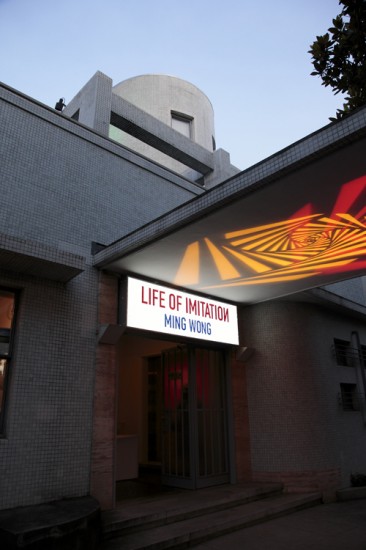
Special lighting at the opening reception on the ceiling
TANG FU KUEN
Here in Gallery I, you get the context of the golden era of Singapore cinema in 1950s and ‘60s.
DOCUMENTARY WORKS BY SHERMAN ONG
There are 3 documentary works made by video artist Sherman Ong. He interviewed Neo Chon Tech, Singapore’s last surviving billboard painter; Wong Han Min, private collector of cinema memorabilia; and the cinema ticket seller.
(The documentary about the ticket seller lady is shown at the entrance of the museum)
POSTERS AND CINEMA MEMORABILIA
From the collection of Mr. Wong Han Min, who is also featured in the documentary work.
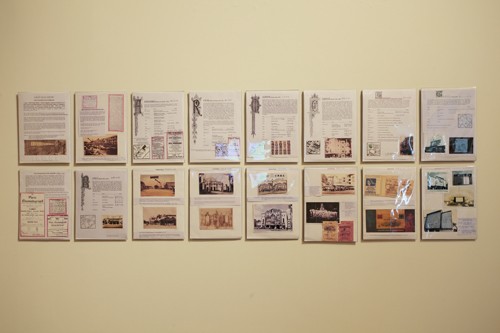
A selection of ephemera related to the early cinemas in Singapore. Mr. Wong has reconstructed ticket stubs and photos into A4-sized “artworks”.
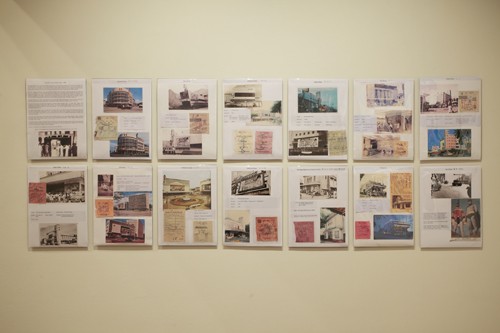
Documents related to the Golden Age of Singapore Cinema (1950s and ‘60s)
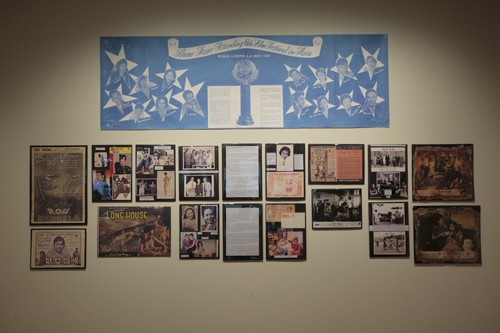
Images of Malaysian cinema stars (left) and Chinese cinema stars (right)
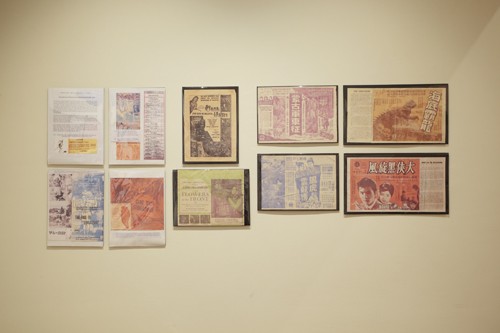
Documents about the Japanese movies which were screened in Singapore
*Mr. Wong Han Min will give a talk at the museum on Sunday, July 31. For more information please click here.
BILLBOARD PAINTINGS
They were painted by Singapore’s last surviving billboard painter, Mr. Neo Chon Teck. It was important to include his work in the exhibition because we wanted to acknowledge him as an artist and not just as billboard painter.
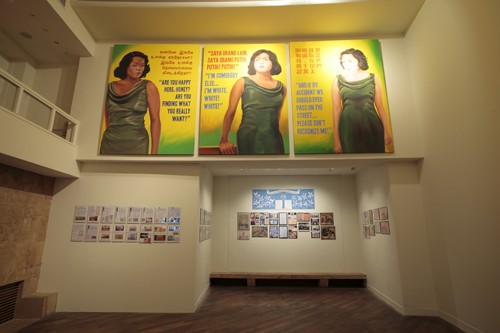
“Life of Imitation”, Neo Chon Teck (designed by Ming Wong), acrylic on canvas, 2009
GOLDEN ERA OF SINGAPORE CINEMA: 1950s and ‘60s
1950s and ‘60s were the most politically exciting years in the Singapore history. We were trying to break away from the British rule and later from Malaysia; we have just come out of the Japanese war years and there were also the communists trying to take over the region so in this setting, cinema was the unifying force. It was also during this period that we had most violent racial violence amongst people, especially between the Malays and Chinese. But cinema became the most perfect collaboration between different people — Chinese businessmen were owners of the cinemas. They employed the Malays as directors, actors, composers, and hired Indians from India to be the film directors and camera man.
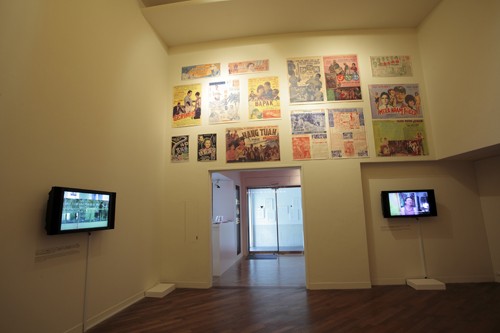
Please look at this poster (bottom row/second from right, printed in red and blue). This is an Indian film but with is publicized in all kinds of languages – English, Chinese, Jawi and Tamil. This is absolutely unusual. I don’t think you could find this kind of posters anywhere in the world. For our grandparents, even if they didn’t speak Malay or Hindi, they still went to the cinema and they could even learn to sing Malay and Hindi songs. When the cinema began, it was like a magic community coming together for film.
(to be continued)
For the large-scale video installation, please visit the museum!
photos by: Hirotaka Yonekura
—————————————————
Please check here for Hara Museum access information
Ming Wong: Life of Imitation
-August 28, Sun
Now on sale. Yoshitmo Nara Charity Large-sized Postcard Set
Hara Museum is now participating in MuPon (museum discount ticket system using iPhone application)! http://www.tokyoartbeat.com/apps/mupon
Visit Hara Museum and Hara Museum ARC Twitter (in Japanese only) (account name: @haramuseum @HaraMuseumARC)
http://twitter.com/haramuseum
http://twitter.com/HaraMuseumARC
http://www.haramuseum.or.jp (museum website)
http://mobile.haramuseum.or.jp (mobile site)
There has been temporary changes(until July 22) in museum opening hours for Hara Museum ARC (Gunma). Please click here for further details.
